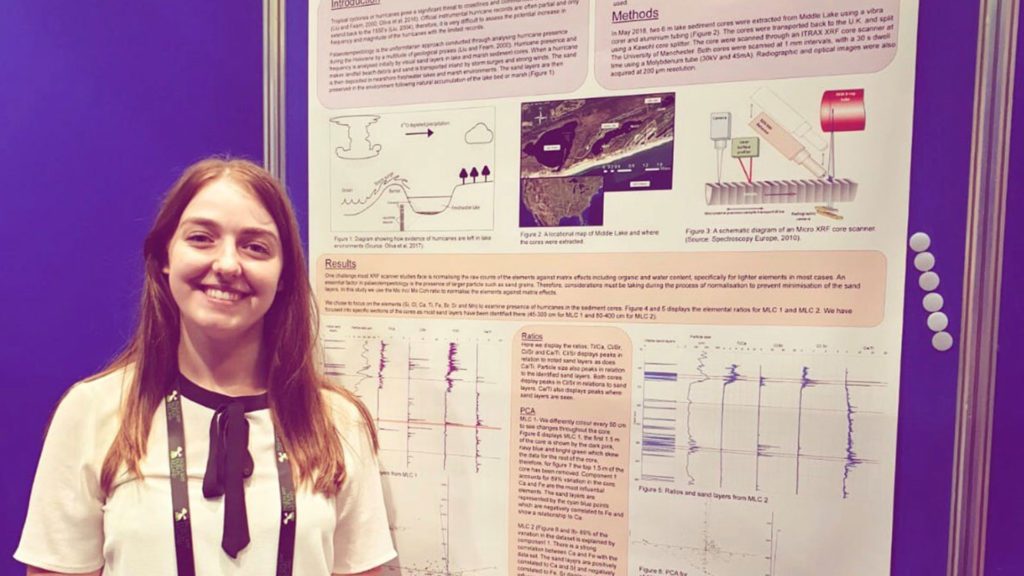Research presented at INQUA’s 20th congress in Dublin
Edge Hill University geography and geology academics Dr Joanne Egan, Dr Claire Jones, and their PhD student Emma Readitt travelled to Dublin to present their research at the world renowned International Union For Quaternary Research (INQUA) conference in July 2019.
INQUA was founded in 1928 by a group of scientists seeking to improve understanding of environmental change during the glacial ages through interdisciplinary research. Today, more than 45-member countries, spread throughout the world, contribute to INQUA’s vitality.
Every four years INQUA hold a conference in a new and exciting location. This year, INQUA’s 20th congress was in Dublin.


Joanne presented her research in two sessions, her oral presentation was entitled “The impact and significance of tephra deposition on a Holocene forest and lake environment in the North Cascades, Washington, USA.” This research assesses the impact of the climactic eruption of Mount Mazama c.7600 years BP on a lake and forest environment 500 km away. You can read more about this on the sciencedirect and Cambridge.org . Joanne’s poster was entitled “Postglacial diatom-climate responses in a small lake in the Pacific northwest of North America”, which investigates diatom inferred Holocene climate change and the varying amplitude of ENSO events in the Pacific Northwest and its effect on climate.


Claire also presented in two sessions, one poster entitled “Wistman’s Wood: A tale of conservation value and forest dynamics” and the other “Holocene fire history of the British Isles”. The first poster demonstrated how palaeoecology can be of use to the wider conservation and management community, by informing their management decisions with an understanding of forest dynamics through time. The second poster presented some new data of the fire history of the British Isles, providing evidence that despite the temperate, deciduous nature of our vegetation, natural burning has occurred in the past.


Emma presented her PhD research in two sessions, the first poster entitled “An application of ITRAX XRF scanning of lake and marsh sediment cores for palaeotempestology” and the second poster entitled “A multi-proxy approach to examine terrestrial and aquatic environmental change resulting from palaeo-hurricane events”. The first poster examines the use of an ITRAX XRF core scanner for palaeo-hurricane reconstruction. The poster also analyses the use of specific ratios such as Cl/Br and Ca/Ti for hurricane identification in sediment cores. The second poster presents current findings of two sediment cores from Middle Lake, Alabama, USA. This poster demonstrates how palaeo-hurricanes are identified through a multitude of proxies including particle size, organic matter content, water content and diatom analysis.


Throughout the conference there were many interesting talks from researchers, keynotes and plenary’s, which even took us to Quaternary Mars. It was also a great honour to witness two well esteemed Quaternary Scientists, John Lowe and Mike Walker, receive a Special Recognition Award for their contribution “Reconstructing Quaternary Environments”, whose book has proven to be an invaluable resource for students, instructors and researchers.
Overall, this was an excellent conference with lots of networking and interesting conversation with fellow Quaternary Scientists from all over the world. The next INQUA will be in Rome in 2023 until then, here are some fun statistics from INQUA, Dublin 2019:
- 2,539 delegates attended the conference
- 75 countries represented
- 1,422 men and 1,117 women
- 1,185 oral presentation
- 1,476 posters
- 14,154 lunches served
- 28,308 coffees or teas were drunk
- And finally, there was only ONE day of rain.